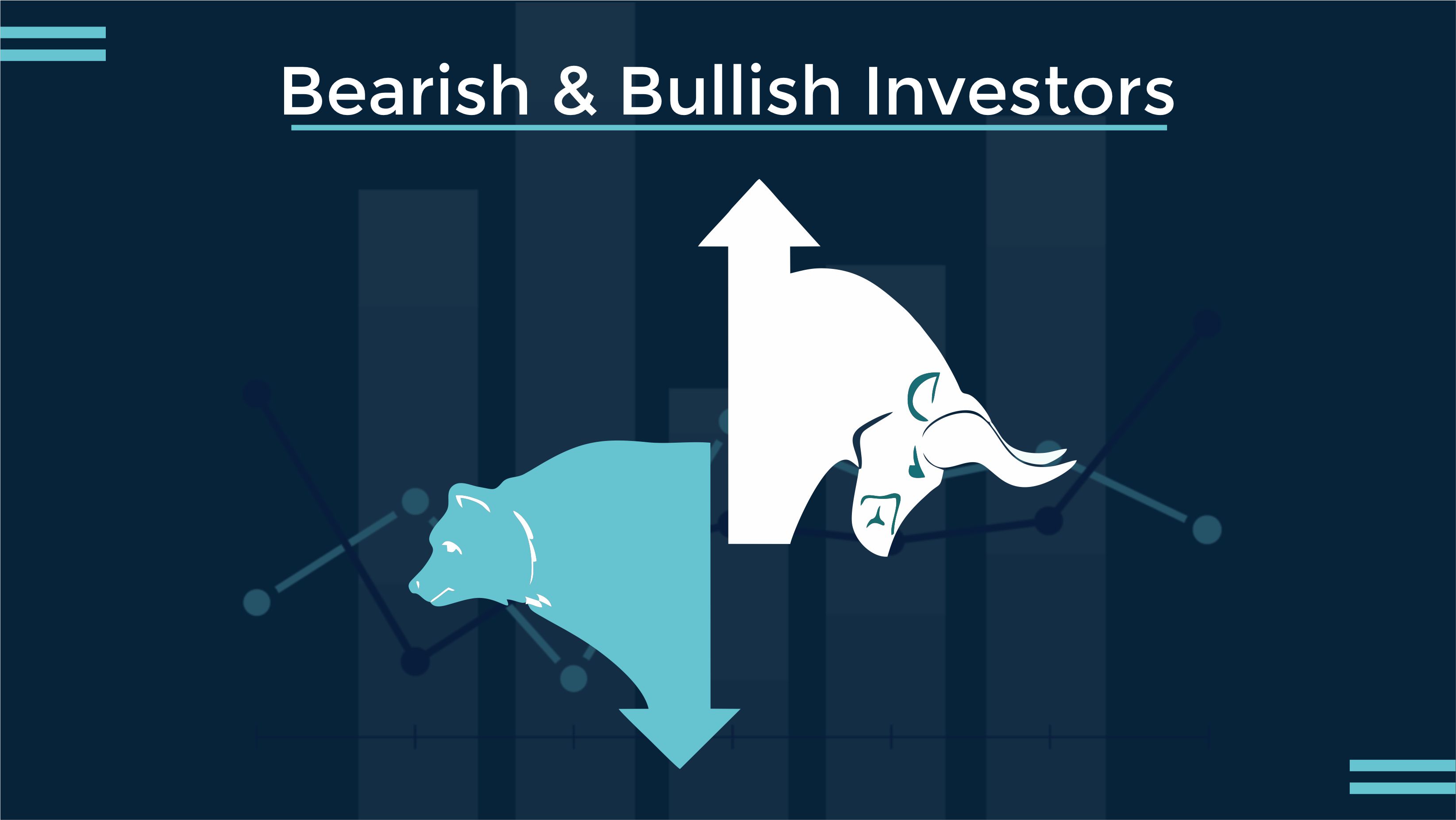How To Short Tesla Stock
Posted:
Tesla(TSLA) is headquartered in Texas, United States. Their technological innovations in the automotive industry have made them a force to be reckoned with for the foreseeable future.
Their cars are known for their autopilot mode and how beneficial they are to the environment because they produce zero emissions. Because of these factors and many others, people worldwide buy Tesla stocks waiting for the next big eruption on the market.
Today we’ll talk about how to short Tesla stock for those keen on investing and the stock market regarding Tesla’s share prices. There are various views expressed about the volatility of the Tesla stock and various investment advice given on different portals but investors should understand the business development of the company before taking any investment decisions. We’ll discuss what shorting a stock is, different ways to go about it, and shorting Tesla stock.
What is Shorting Stock?
Shorting stock or short selling is a type of investment strategy that many experienced traders repeatedly use. Investors borrow stock from their broker’s inventory and promise to return them once short selling has finished. It usually works as follows:
- You speculate that a stock’s price will decline in the future and borrow a certain amount of shares from your broker at the stock’s current price
- Once the stock price falls, you buy back the shares that were borrowed and make a profit off of the difference
Although it may appear to be a simple concept, there’s a reason why only experienced traders use this tactic. Short selling a stock comes with considerable risk. There’s no guarantee that the stock’s price will fall.
If the share price happens to go up, then you’ll have to buy back the shares you borrowed from your broker at a higher price. This means that you will lose money. This is one of the reasons to take extra caution when you decide to short Tesla stock.
Bearish and Bullish Investors

Before we continue talking about how to short Tesla stock, it’s imperative to learn about two terms you’ll often hear in the investment world: bearish and bullish. These two terms describe how a potential investor views the stock market.
A bullish investor believes the stock market as a whole or a specific security will increase in price. They’re foreseeing long-term general gains in the market. This works in conjunction with a bull market in which stocks are frequently rising over time. For example, the longest bull market in U.S. history lasted from December 1987 to March 2000.
A bearish investor believes that the whole market or a specific stock will fall in price. An investor views the market in this position because they see a decline in share prices by 20% over time. The longest bear market in American history was from March 1937 to April 1942.
Knowing these two investment positions on the market will aid you when you decide to short Tesla stock. It always helps to have a bit more information when starting a new venture.
Ways to Short Tesla:

There are various financial instruments to choose from to short a stock, let's discuss various assets to choose from.
Short Selling on Margin
One of the most common ways to short-sell a stock is through an equity margin account. Short selling through equities involves using stocks as the underlying asset for the short position. The short seller would borrow shares of the stock they want to short from a broker and sell them in the market. If the price of the stock falls, the short seller can buy back the shares at a lower price and return them to the broker, profiting from the price difference.
Let’s understand this through an example:
If an investor wants to short-sell 100 shares of Tesla (TSLA). Assuming the current market price of the Tesla is $50 per share, which means that the investor would need to sell the shares for a total of $5,000. However, the investor does not currently have the shares in their possession.
To short-sell the shares, the investor borrows 100 shares of Tesla from their broker and immediately sells them on the open market for $5,000. The investor then waits for the price of the shares to fall, hoping to buy them back at a lower price.
Assuming that the price of the shares falls to $40 per share, the investor can then buy back the 100 shares for a total of $4,000. The investor returns the borrowed shares to their broker and pockets the $1,000 profit ($5,000 initial sale price minus $4,000 buyback price).
However, because the investor borrowed the shares and sold them on margin, they would need to pay interest on the funds borrowed from the broker. Let's assume that the interest rate is 5%. In this case, the investor would need to pay $250 in interest charges ($5,000 initial sale price multiplied by 5% interest rate) for the duration of the short position.
So, in this example, the investor's total profit would be $750 ($1,000 gain minus $250 in interest charges).
Short selling through equities can be a high-risk strategy because if the stock price rises instead of falling, the short seller will be forced to buy back the shares at a higher price, resulting in a loss. Apart from this, short-selling through equities has higher fees and other expenses as compared to other financial instruments.
Short Selling Through Hedge Fund
A hedge fund is a type of investment fund that pools capital from accredited individuals or institutional investors and invests in various assets, often using more sophisticated strategies than traditional mutual funds.
Short selling can be done through a hedge fund, as hedge funds often engage in a variety of trading strategies which includes short selling. Investors can invest in a hedge fund that engages in short selling by providing capital to the fund, and the fund manager will use that capital to execute trades, including short-selling positions.
The problem of investing through a Hedge fund carries its own risks, including the potential for losses and lack of liquidity. Furthermore, Hedge fund trading requires a large amount of capital to start investing. Moreover, the management fees and other expenses are comparatively a lot higher than other financial instruments.
Short Selling Through Inverse or Short ETPs
Short ETPs are financial instruments that aim to deliver opposite returns of their underlying stocks or indices. Like leveraged ETPs, Inverse ETPs allow investors to magnify their returns on underlying benchmarked unleveraged assets like indices or single-stock ETFs. Short ETPs can be used by investors as a way to hedge their portfolios against market downturns or to profit from market declines.
Inverse ETPs are usually denoted as either a negative number like -2x, -3x or terms like “short” or “inverse” in the name of funds or product name.
For example, Investors can short Tesla stock through ETPs that focus on shorting either single-stock or indices. For example, the -3x Tesla Short aims to deliver 3 times the inverse of the daily performance of the Tesla shares. This means that if the Tesla Stock falls by 1% on a given day, the -3x short Tesla ETP would rise by 3%.
Short-selling Tesla through this method can be less risky in comparison to shorting Tesla stock directly. The fees and other expenses in comparison are less than other financial instruments. Also, Graniteshares ETPs offer an embedded stop-loss mechanism that helps investors to curb the loss if the price goes in the opposite direction of the investor’s expectation.
How to Safely Short Tesla Stock
With this brief overview of short-selling stocks, financial instruments, and market positions, it’s time to understand how you’ll be able to short Tesla stock. There are two ways to do so:
- Credit Call Spread
- Covered Call
Using these two methods, you’ll have a better chance of limiting your risk. Make sure that you research the market well before you start this process. The goal is always to gain money instead of losing it.

Credit Call Spread
A credit call spread is a bearish trade strategy where the investor buys several call options at a specific price and sells the same number of options at a lower price before they expire later that month. If you want to reach maximum profit, the stock price would need to close under the lower striking call that you’ll sell at its expiration date.
Here’s a basic formula to calculate the maximum profit that you can receive:
- Net Premium Received - Commissions Paid To Broker = Max Profit
Depending on the broker you borrow from, you will have to pay a small commission fee when buying the stock. However, if you’re an active trader, commissions can eat away at your profit, so it’s best to look for lower commission options. To better understand using a credit call spread, we’ll use an example about Tesla stock.
Let’s say that Tesla stock is trading at $25 in May. An investor that’s bearish on Tesla enters a call spread of JUN 80 call for $200 and sells JUN 75 call for $500. Doing this will give you a net credit of $300 for entering this trade.
If the stock price drops to $22 at the expiration date, both options ( JUN 80 call and JUN 75 call) will expire worthless, and you’ll get to keep the $300 as profit. You’ve now successfully earned a profit on your Tesla stock.
There are also more aggressive bear call spread strategies to widen the difference between the two options’ strike prices. However, the cost of the stock needs to go down significantly to maximize profit.
Bull Call Spread
Although credit call spreads are a well-known bearish strategy, bullish investors use call spreads to produce long-term future gains. A bull call spread typically comprises a long call option with a lower strike price and a short call option with a higher strike price. Both calls have the same underlying expiration date and stock.
Bull call spreads establish net cost, and profit is made as the underlying stock rises in price. Profit can be limited if the stock price of the short calls strike price rises, and you could limit losses if the cost of the stock goes below the strike price of the long call.
To calculate maximum profit, you can use this formula:
- Strike Price of Short Call - Strike Price of Long Call - Net Premium Paid - Commissions Paid = Max Profit
So in the example above, the difference in the strike prices for the Tesla stock would be 5 (JUN 80 - JUN 75). The net premium paid would be the difference between the cost of the share that was bought and sold. Finally, the commission is what you would pay your brokerage firm.
With both a bear call spread and a bull call spread, you’ll be able to see what the market offers while minimizing your risk and maxing out your earnings. It will depend on the strategy that you want to utilize.

Covered Call
The next strategy that can be used to short Tesla stock safely is a covered call. A covered call is a popular strategy in which an investor has a long position on an asset and sells their call options on that asset to make a profit.
Using the covered call strategy is seen as neutral because it is neither bearish nor bullish. It’s mostly used when an investor believes that the stock price will only slightly increase or decrease during the length of the call option.
Use this formula to calculate maximum profit using a covered call:
- (Strike Price - Stock Entry Price) + Option Premium Received = Maximum Profit
Let’s say that you buy Tesla stock for $20 and get a $0.26 option premium by selling a $25 strike price call. You decide to keep your position, presuming that the Tesla price stays under $25 until the expiration date. If the price goes up to $30, you’ll only make up to $25, which means your maximum profit will be $25 (strike price) - $20 (stock price) + $0.26 = $5.26 per call.
Like most trading strategies, covered calls come with the risk of making and losing money. However, they are a popular strategy because they are relatively low risk.
Relationship management tools and techniques of Tesla?
Tesla, like any other company, must engage in relationship management to maintain positive relationships with various stakeholders, including customers, investors, employees, and regulatory bodies.
What is a relevant base prospectus for Tesla?
A relevant base prospectus is a legal document that outlines the terms and conditions of securities that a company intends to issue. Tesla, as a publicly traded company, is required to file relevant base prospectuses with regulatory bodies such as the Securities and Exchange Commission (SEC) in the United States. These prospectuses typically include information about the company's financial performance, business operations, risks and uncertainties, and other relevant information.
How do you short a Tesla in the UK?
Investors in the UK can short Tesla for that they will need to have a trading account with a broker that offers short-selling services. You will also need to have sufficient funds in your account to cover any losses that may occur. Most of the brokers in the UK offer not just equities and derivatives but also ETPs that can help in shorting Tesla. With a brokerage account, investors can trade for short-term or long-term in stocks, Leveraged ETPs as well as in derivative instruments.
Investors should have a look at the exchange rate changes that can also have an effect on Tesla's stock movements.
What is the short Tesla symbol?
The symbol for shorting Tesla may vary depending on the trading platform and the specific instrument used for shorting.
In general, short selling is not done using a different symbol or code than regular buying or selling of a stock. To short Tesla, you would typically enter a sell order for Tesla shares or an instrument that tracks the performance of Tesla's stock price, such as a futures contract or a put option. Just for shorting a stock through ETPs, there are different ticker symbols for example for Graniteshares 3x Short Tesla ETP ticker is STS.
What is a 3x short Tesla?
3x Short is a collateralized, Exchange-Traded Product (ETP). It tracks, the performance of the underlying Tesla stock that seeks to provide -3 times the daily performance of Tesla Inc shares.
It's important to note that short selling involves significant risks, as the price of the stock can rise unexpectedly, potentially leading to substantial losses on your initial investment. Investors should understand the risks involved in short selling in general as well as financial market risks before trading.
Trade Your Stocks at GraniteShares
Now that you understand the safest ways to short Tesla stock, it’s time to choose a company that provides innovative investment solutions. At GraniteShares, we provide affordable consultations about ETP strategies to help you maximize your gains while minimizing your losses.
Notable ETP strategies that we use include:
- Short Selling
- Dollar-Cost Averaging
- Asset Allocation
- Swing Trading
- Sector Rotation
- Hedging
- Learning to bet on seasonal trends
With these strategies, regardless if you’re an expert trader or just beginning, we could help you find the investment portfolio with a wide variety of assets. Trading with GraniteShares is the best step you can take towards gaining financial freedom.
Contact us today for more information about investment options and how you can start generating additional income today.
Short Tesla ETPs by GraniteShares
Short Tesla ETPs by GraniteShares
| Product name | Ticker | ||
|---|---|---|---|
| USD | EUR | GBX | |
| 3STS | 3STE | 3STP | |
| 3LTS | 3LTE | 3LTP | |
| 3SFT | 3S3E | 3S3P | |
| 3FTG | 3FTE | 3FTP | |
| FTNG | FTNE | FTNP | |
| SFTG | SFTE | SFTP | |
DISCLAIMER
This is a disclaimer stating that all trading and investing comes with risks. Always do your research and do not invest more than you can afford to spend.
GraniteShares accepts no responsibility for any loss or damage resulting directly or indirectly from the use of this blog or the contents. GraniteShares Limited (“GraniteShares”) (FRN: 798443) is an appointed representative of Messels Limited which is authorised and regulated by the Financial Conduct Authority.
This blog does not constitute an offer to buy or sell or a solicitation of an offer to buy securities in any company. Nothing contained herein constitutes investment, legal, tax or other advice nor is to be relied upon in making an investment or other decision. No recommendation is made positive or otherwise, regarding individual securities or investments mentioned herein. Any summary list of risk factors does not purport to be a complete enumeration or explanation of the risks involved in a particular investment. Prospective clients must consult with their own legal, tax and financial advisers before deciding to invest. This email contains the opinions of the author and such opinions are subject to change without notice. The source of data is GraniteShares unless otherwise stated. No guarantee is made to the accuracy of the information provided which has been obtained from sources believed to be reliable. This email and the information contained herein is intended only for the use of persons (or entities they represent) to whom it has been provided. Past performance is not a reliable indicator of future results. The value of an investment may go down as well as up and can result in losses, up to and including a total loss of the amount initially invested. Investments may involve numerous risks including, among others, company risks, general market risks, credit risks, foreign exchange risks, interest rate risks, geopolitical risks and liquidity risks. Please note that GraniteShares short and leveraged Exchange Traded Products are for sophisticated investors.



